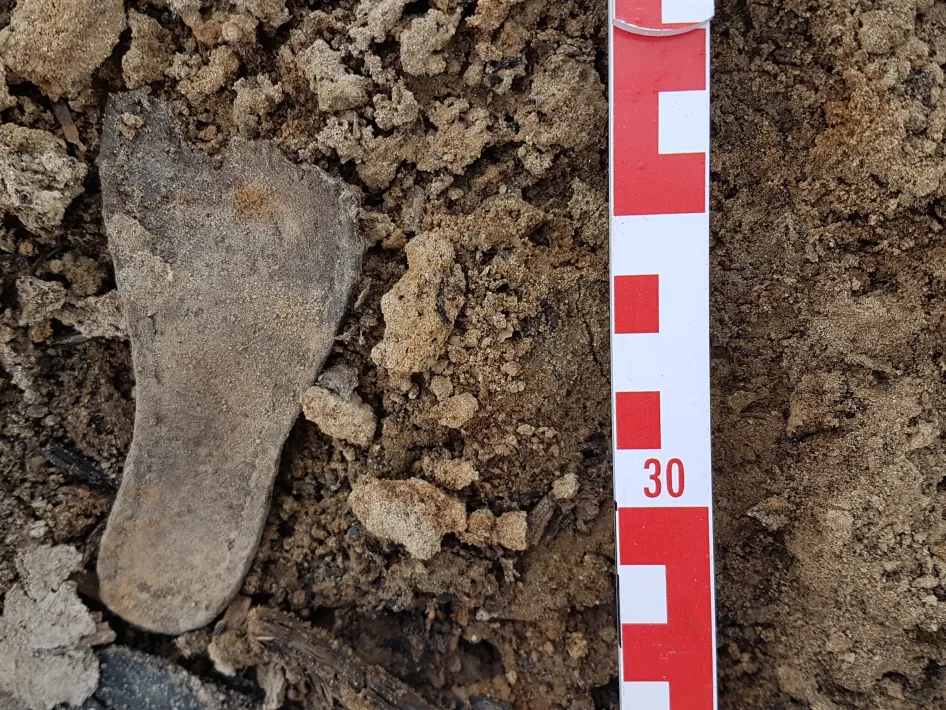Here in Maasband, a remarkable discovery has been made! A large amount of leather waste, animal bones, and coal remains have been found along the Scheveleerskoelendijk. These remains date back to the early 15th century. How did they end up here? Discover this fascinating story of recycling in the Late Middle Ages.
Maasband Walking Tour
Would you like to learn more about the traces of Maasband's past? Take a walking tour where the Maas River plays a central role.
Further along the route, you will come across traces of an Iron Age farm and learn more about the vanished houses. In the 16th century, the Maas changed its course, forcing the inhabitants of Maasband to adapt. They also sought ways to control the river’s water. In the gravel, wooden stakes have been found, some neatly arranged in a row. An old dike was also rediscovered, which once provided protection against high water. But the rising water was not only fought—it was also used for irrigation.
Maasband became part of Stein, altering its road network. Borders also shifted during the Napoleonic era. During this time, the ‘Gebrande Stein’ disappeared—a boundary stone that once marked no fewer than five territorial borders. Will it ever be found again?
Discover it all on this Maasband route!
Location: Nieuwe Dijkweg, Stein (Maasband)
Parking: Available at Maasbanderkerkweg, about 50 meters from the Archeo Route Limburg site.


